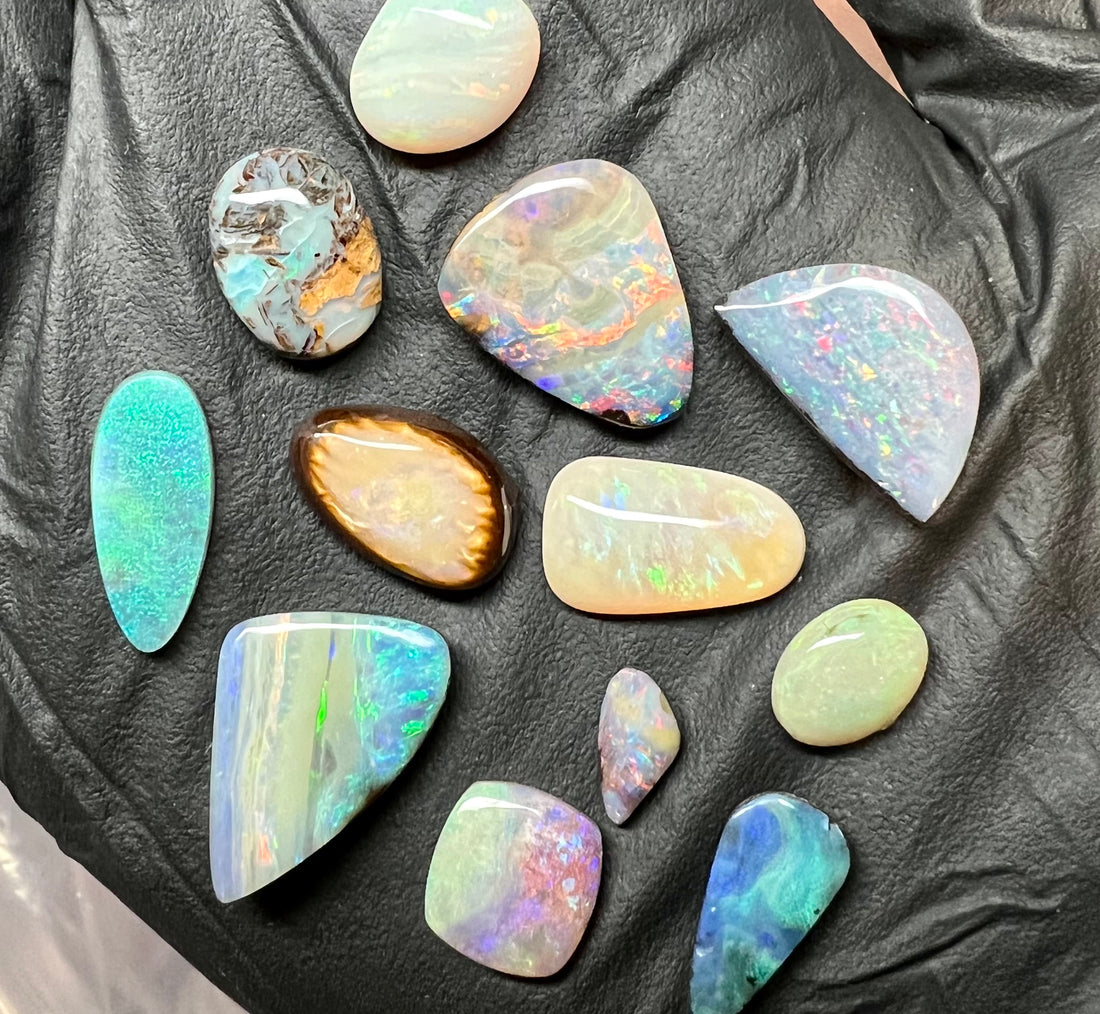Opals come in a vast array of colors, translucence, clarity, and shapes. Opal also happens to be one of my favorite materials to cut. Given the overwhelming variety of opals available for purchase or use in jewelry, where is an opal fan to start? Knowledge is key, and we can start by bucketing opal into 7 different types of stone. What are they?
1. Black opal is the most expensive and the rarest variety. The combination of the intense background color of opaque black to dark grey pops the "play of color" (the splitting of light into the colors of a spectrum that happens when light passes through the gaps between the silica spheres of the rock) and creates a one-of-a-kind top-quality gemstone. Only found in Lightening Ridge, Australia.
2. Crystal opal is often cut as a two sided stone as it is usually semitransparent to transparent which aids in its excellent play of color. Best crystal opal is from Australia.
3. White opal is more abundant and found in many locations such as Australia, Ethiopia, Brazil, and the United States. Background color is white to light grey. Often found as moderately priced commercial opal. High quality white opal has vivid play-of-color and sells for a much higher price point.
4. Boulder opal is always cut to include the host rock (ironstone), as it is the reinforcing layer behind the gem. The opal shows up as thin layers of matrix or river of color through the stone. Because of this natural backing, boulder opal is more durable than other opal types. Boulder opal is often cut into irregular shapes and sizes that play to the best features of the matrix. This means boulder opal lends itself towards one-of-a-kind pieces of jewelry. Karin Luvaas Jewelry uses a lot of boulder opal! Only found in Queensland, Australia.
5. Fire opal is most commonly found in Mexico and is regularly faceted because of the clarity and color. The background is a transparent or semi translucent orange, red, or yellow and if there is play of color, the stone is typically cut as a cabochon to feature the phenomenon. Newer discoveries of fire opal have been found in Oregon and Brazil.
6. Water opal (also known as jelly opal) has minimal play of color and has a cloudy appearance. Background color can be transparent to translucent. For these reasons, water opal is lower in value.
7. Assembled opal is when a thin layer of opal, a slice that is not durable enough to stand alone, needs to be backed with another material to improve appearance and durability. These are typical found as doublets and triplets. You will notice a distinct line of color difference when viewing the stone from the side. These stones tend to be much less expensive.
Now that you know what you're looking for, let's get your opal on! You can shop opal on karinluvaas.com here.

